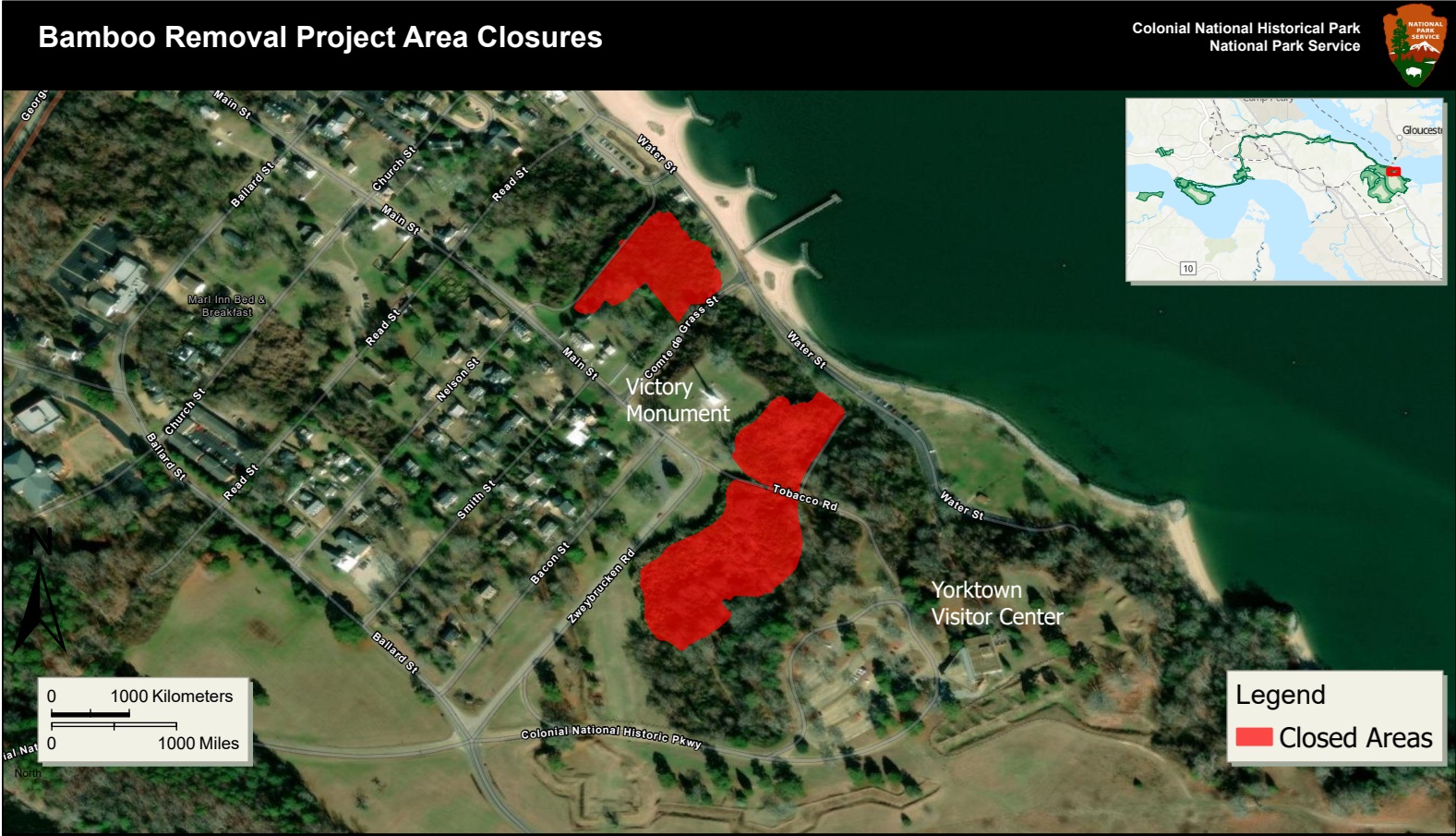News Release
You are viewing ARCHIVED content published online before January 20, 2025.
Please note that this content is NOT UPDATED, and links may not work. For current information,
visit https://www.nps.gov/aboutus/news/index.htm.

National Park Service
|
Subscribe
|
Contact: Sandra Tennyson, 757-897-4598
YORKTOWN, Va. — Colonial National Historical Park announces the latest phase of the bamboo removal project in Yorktown is complete and reminds visitors that temporary closures in these treated areas will remain in effect.Over the past couple of months, contractors removed approximately 2 acres of invasive plant species from the area between Compte De Grasse Water Street, the Great Road, and Main Street in the Village of Yorktown, and approximately 0.5 acres near Windmill Point, specifically near the intersection of Water and Mathews Streets.
Park officials have temporarily closed these areas and ask that the public to please adhere to all safety notices and barricades.
“As enticing as the hillsides may appear, we ask that residents and visitors stay off the cleared areas,” said Superintendent Jerri Marr. “Debris left from the removal creates multiple safety concerns. Additionally, staying out of the area will assist with habitat restoration and slope stabilization.”
This multi-phased project includes the elimination of Golden Bamboo, Empress Tree, Chinese Privet, Wisteria, and English Ivy. Contractors will allow the areas to regrow to about 4-5 feet in height, at which point they will return to treat the regrowth. Ultimately, multiple visits will be made to retreat the area, and regrowth will be recut by hand. This process may take several years due to the persistence of invasive bamboo.
Non-native species are extremely invasive, quickly establishing and growing in natural areas and on the historic battlefield. They form dense areas of vegetation that compete with native plants, degrading food resources and habitats for wildlife. The removal of these invasives will allow native trees and shrubs to repopulate, restoring cultural landscape views and improve natural ecosystem health.
Last updated: January 2, 2025
